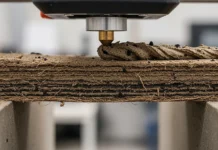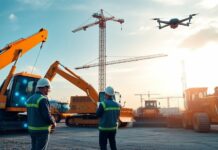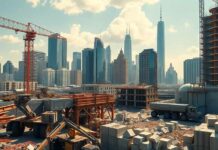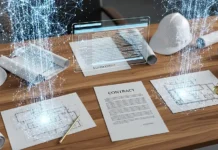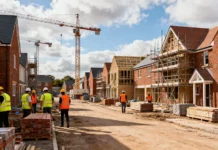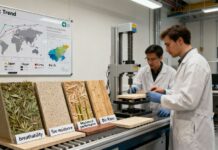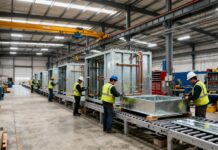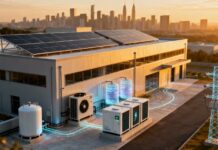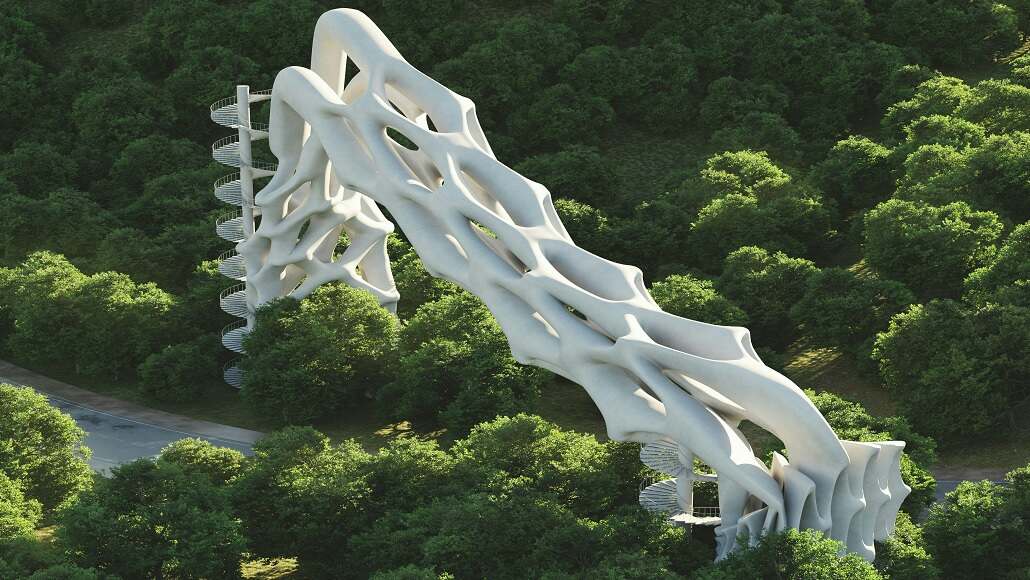When it comes to the last decade, the architectural spectrum has gone through a seismic transformation. Massive skylines, unmatched 3-D forms, and organic facades have become not just possible but pretty common these days. This bold architectural time happens to be rooted in the emergence of composite materials and, of course, the digital technologies that bring them to life.
It is well to be noted that architectural composites happen to be the heart of this revolution. Rather than being restricted through the limits of concrete as well as steel, architects are now pursuing freeform geometries, complex structural details, and lightweight yet robust designs. Composites go on to empower creative ambition along with practical engineering, thereby offering a novel language for 21st-century architecture.
What do you mean by composite in architecture?
Composite materials happen to be engineered by way of combining two or more constituent materials, each having distinct traits, in order to form a product that makes sure to take utmost advantage of the strengths of its parts. When it comes to construction, the most widely used composite happens to be fibre-reinforced polymers (FRPs), in which fibres, such as glass, carbon, or aramid, happen to be embedded within a resin matrix. This structure goes on to offer incredible strength, durability, and flexibility, as well as lightweight characteristics.
Particularly for architects, this flexibility happens to be invaluable. Through adjusting the arrangements when it comes to fibres as well as the choice of matrix, architectural composites can be customized to a particular need, whether that means enhancing the fire resistance when it comes to public buildings or elevating insulation performance within a climate-sensitive project or even attaining a special visual texture or color for a signature facade.
There are recent advances that have made it possible to produce composites that go ahead and incorporate recycled materials as well as bio-based resins, thereby further syncing the industry with rising sustainability mandates. As environmental consciousness goes on to become the new normal, the capacity to make use of readily renewable or recycled components with structural elements has become a defining benefit of composites as compared to traditional materials.
3-D forms and geometry power
Traditionally, architectural ambitions have often been tempered due to the realities of conventional materials. Concrete, along with steel, although being incredibly robust and dependable, is often expensive to shape into double-curved or highly complex forms. Attaining those dramatic, organic lines that go on to define contemporary showpieces happens to mean accepting costs that are higher as well as longer construction timelines. Thus, for numerous projects, this is enough to put such kinds of ambitions out of reach.
It is worth noting that composites have fundamentally altered this equation. Due to the fact that they can be molded as well as fabricated to infact, almost any kind of shape, designers are now more than willing to draw inspiration directly from nature. These kinds of intricate geometries are no longer termed as aesthetic luxuries, and they are also functional, thereby contributing to enhanced acoustics within concerts, more effective lighting strategies within museums or even offices, and elevated aerodynamic performance when it comes to transportation hubs.
And the impact is indeed profound. Roofs as well as canopies can now sweep fluidly beyond the vast open spaces and are unrestricted due to the cost or challenges of forming traditional materials. The facades can go on to feature smart skin that responds to the environmental cues, thereby adapting their appearance or performance all across the day. The integration of form as well as function happens to be seamless now, and this kind of newfound design freedom is indeed a stamp of the age of composites.
Right from digital vision to physical reality – the onset of fabrication technologies
The growth of composites coincides with the revolution within the digital fabrication methods that goes on to translate designs directly from the computer screen of the architect to the construction site. This kind of synergy is indeed mandatory when it comes to executing intricatey, and that too with precision and efficiency. One of the most exciting techniques happens to be large-scale 3-D printing, or additive manufacturing, wherein the composite materials happen to be extruded layer by layer in order to create intricate forms with minimal wastage. This technology enables every component to be unique, which is indeed invaluable as far as custom cladding, panels, or complex interiors are concerned. One more breakthrough is the usage of robotic filament winding, in which the automated arms wind fibres around what goes on to form with mathematical precision, thereby creating curved beams as well as shelves, which are both lightweight and structurally optimal.
It is well to be noted that computer numerical control—CNC machining—as well as automated layout processes have gone on to further expand what is possible. Custom molds as well as architectural panels get produced with speed as well as positioned exactly to the vision of the designer. The days of labor-intensive or error-prone handcrafting are indeed fading away, and they have been replaced by mass customization as well as reproducibility. It is worth noting that an architect can now specify a varied pattern or shape for every panel on a building and is confident that the fabrication is going to deliver on those customized requirements in an efficient way.
| Property/Attribute | Concrete | Steel | Composites |
| Weight | Very heavy | Heavy | Light to moderate |
| Geometric Flexibility | Limited | Moderate | Excellent |
| Corrosion Resistance | Good | Variable | Outstanding |
| Fabrication Complexity | High for complex | Moderate to high | Low to moderate |
| Environmental Impact | High (CO₂ intensive) | Moderate | Low to moderate (esp. biocomposites) |
| Maintenance | Regular for exterior | Frequent w/o coatings | Low |
| Lifecycle Cost | Moderate | High | Often lower over time |
Market projections as well as adoption trends – 2024 to 2032
The global architectural composites market happens to be in the midst of a pronounced expansion, which is viewed by the recent industry analysis from 2024. This kind of growth is being throttled due to the convergence of sustainability mandates, the iconic architectural design demand, and the ongoing technological integration throughout the field. Throughout the world, regulatory requirements as well as consumer preferences are indeed pushing developers, architects, and municipalities to look out for materials as well as lower environmental footprints. Composite materials, which can be very light and need less energy in order to transport and install, are growing to be an obvious choice. At the same time, city leaders, along with private clients, are commissioning more one-of-a-kind structures and landmarks, which create a sense of place as well as identity. These kinds of projects almost demand unique forms as well as details that composites are much suited to deliver.
When it comes to a technology front, digital design software along with automated fabrication methods have gone on to democratize the access to such advanced materials by bringing the cost down and making their usage practical for smaller and larger projects, as well as boutique applications.
Europe as well as North America at present hold the major share of the market, but the rapid urbanization along with infrastructure investments across the Asia Pacific region are fueling the fastest growth due to a wave of new commercial as well as public projects that utilize composites in ways that are very innovative.
If we go ahead and chart this progress on a line graph, the trend will clearly show a steady as well as substantial rise from 2024 to 2032, with market size almost tripling and composites comprising an even larger share when it comes to both commercial and infrastructure projects.
Case studies
Composites thrive
The impact when it comes to composites can be seen in numerous high-profile projects across the world. For example, when it comes to Europe and Asia, there are several well-known museums that have gone on to adopt ultralight composite shells for their roofs.
Such sweeping as well as column-free spaces are made possible due to the strength-to-weight ratio when it comes to advanced composites by allowing for dramatic spans as well as fluid shapes that would be prohibitively expensive or simply impossible with traditional construction.
When it comes to the Middle East, the skyline happens to be changing as skyscrapers are increasingly clad in parametric composite panels. The facades not only impress visually, but they also offer adaptive shading as well as improved insulation, which in a way helps in reducing energy consumption in some of the world’s harshest climates.
The interplay between aesthetics, geometry, and performance is distinctively helped due to the versatility of composites.
Then there happen to be sports venues, which are another arena when it comes to innovation. Modern stadiums, like the recently constructed ones in Asia and America, have gone on to adopt composite truss systems in order to support their expansive roofs. This kind of approach not just minimizes the weight as well as the amount of material that is required, but it also reduces the requirement when it comes to massive foundations by speeding up the construction and also lowering the cost.
On the other hand, temporary as well as mobile structures like the ones that are used for international expositions as well as festivals also get to benefit from the composites. Prefabricated composite modules can get quickly assembled as well as disassembled and can get transported throughout the world and also be customized for every new environment, all while maintaining structural integrity as well as packing a very visually striking appearance.
Sustainability along with performance advantages
The performance benefits when it comes to composites go beyond their capacity to take on intricate shapes. Because of the fact they are lighter as compared to steel or concrete, composite components can very well decrease the structural dead load when it comes to buildings, which in turn lessens the energy as well as resources that are required for foundations as well as supports. Their inherent resistance When it comes to corrosion as well as environmental exposure means that buildings need much less maintenance and, hence, enjoy longer lifespans.
It is well to be noted that this sustainability gets further enhanced since more manufacturers go on to embrace bio-based as well as recycled fibres when it comes to their composite formulations.
This kind of trend is closing the loop when it comes to resource use and, at the same time, making the entire life cycle of building more environmentally amicable. Innovations when it comes to smart composite systems happen to be emerging as well, with panels that are embedded with sensors that are capable of tracking structural health in real time or even integrating the photovoltaic layers when it comes to on-site renewable energy generation.
Overcoming the challenges
While the advantages happen to be clear, the widespread adoption, when it comes to composites in architecture, is not without challenges. Most notably, the building codes as well as regulatory standards have not always been in sync with the rapid evolution of materials as well as fabrication technologies.
This can go on to make the approval process longer or more intricate, especially for innovative designs.
Apart from this, there is also a requirement for specialized expertise both when it comes to the design phase, in which close partnership between architects, material scientists, and engineers is very essential, and during the fabrication and on-site assembly.
Finally, there happens to be a growing attention to the full life-cycle evaluation of composites. Stakeholders happen to be increasingly mindful when it comes to questions that surround end of life, recycling, or reuse, and the manufacturers happen to be responding with novel initiatives and products that are aimed at circularity as well as responsible resource management.
The future
Going forward, all indications point towards composites playing a very critical role when it comes to architecture for the next decade and even beyond. Already there are experiments in smart as well as adaptive building skins, kinetic facades, and infrastructure that go on to seamlessly integrate renewable energy systems. These tools happen to be available to architects and are becoming more powerful and accessible every year.
Finally
It is well to be noted that composites are redefining what is possible when it comes to infrastructure, thereby allowing designers to go beyond the limitations when it comes to traditional materials as well as realize forms that were previously imagined only in sketches as well as digital renderings.
Their unique combination, when it comes to strength, adaptability, and lightness, helps architects to attain intricate geometries that blend beauty with performance, all of which is advancing the sustainability objectives.
As the sector continues integrating the digital design along with advanced fabrication, composites are all set to become even more integral when it comes to signature projects and even everyday buildings alike. The partnerships between architects, material specialists, and engineers are fostering a novel generation of structures that are not just visually very appealing, but at the same time, they are more resilient as well as environmentally responsible. In essence, the composites happen to be more than just innovative materials, but they go on to represent a new chapter when it comes to architectural thinking. Through harnessing their entire potential, the built environment can become even more adaptive, expressive, and also responsive to the requirements of both people and the planet. Due to composites, the architecture future is indeed bright, bold, and, of course, very beautiful.




